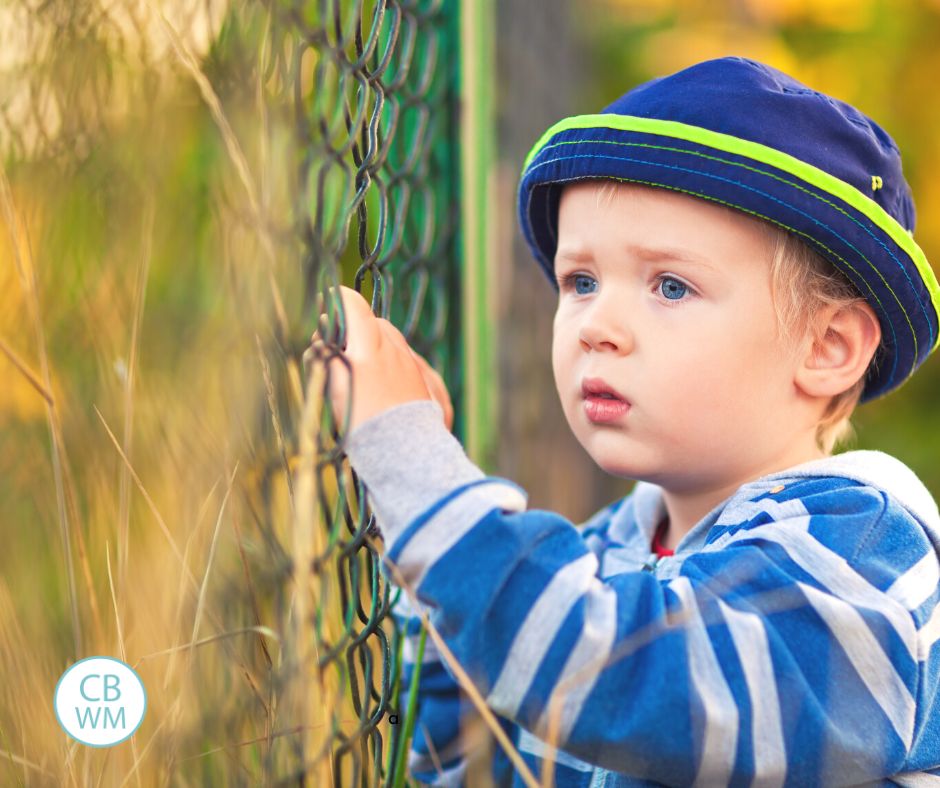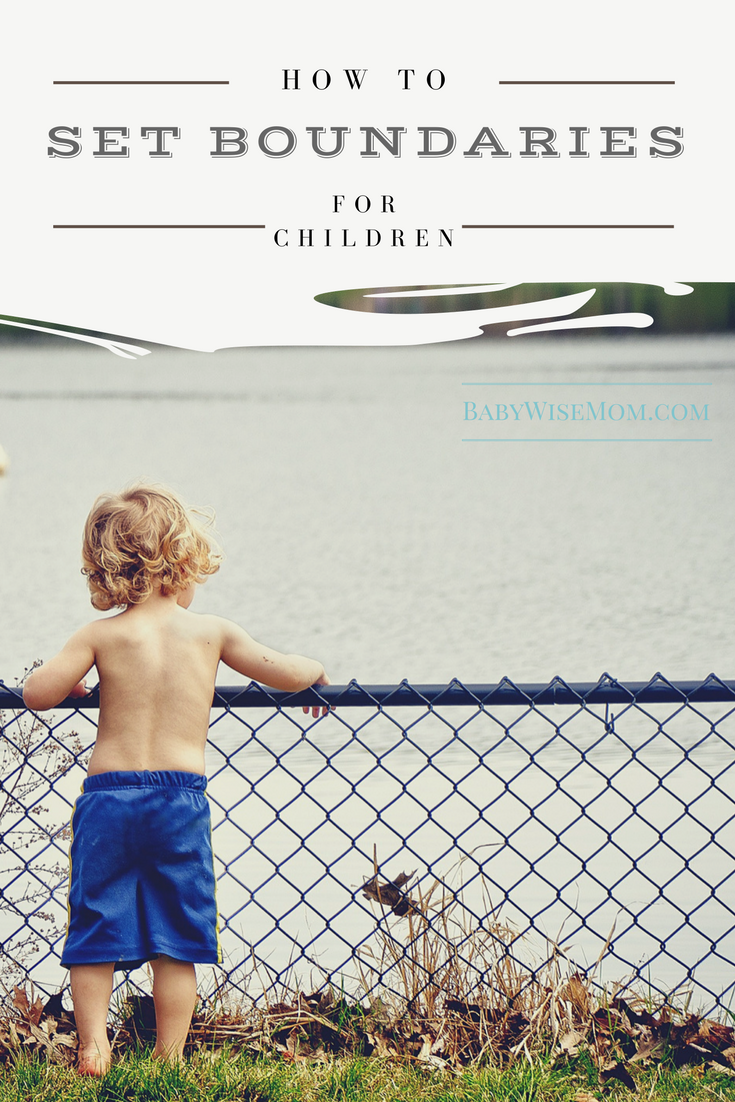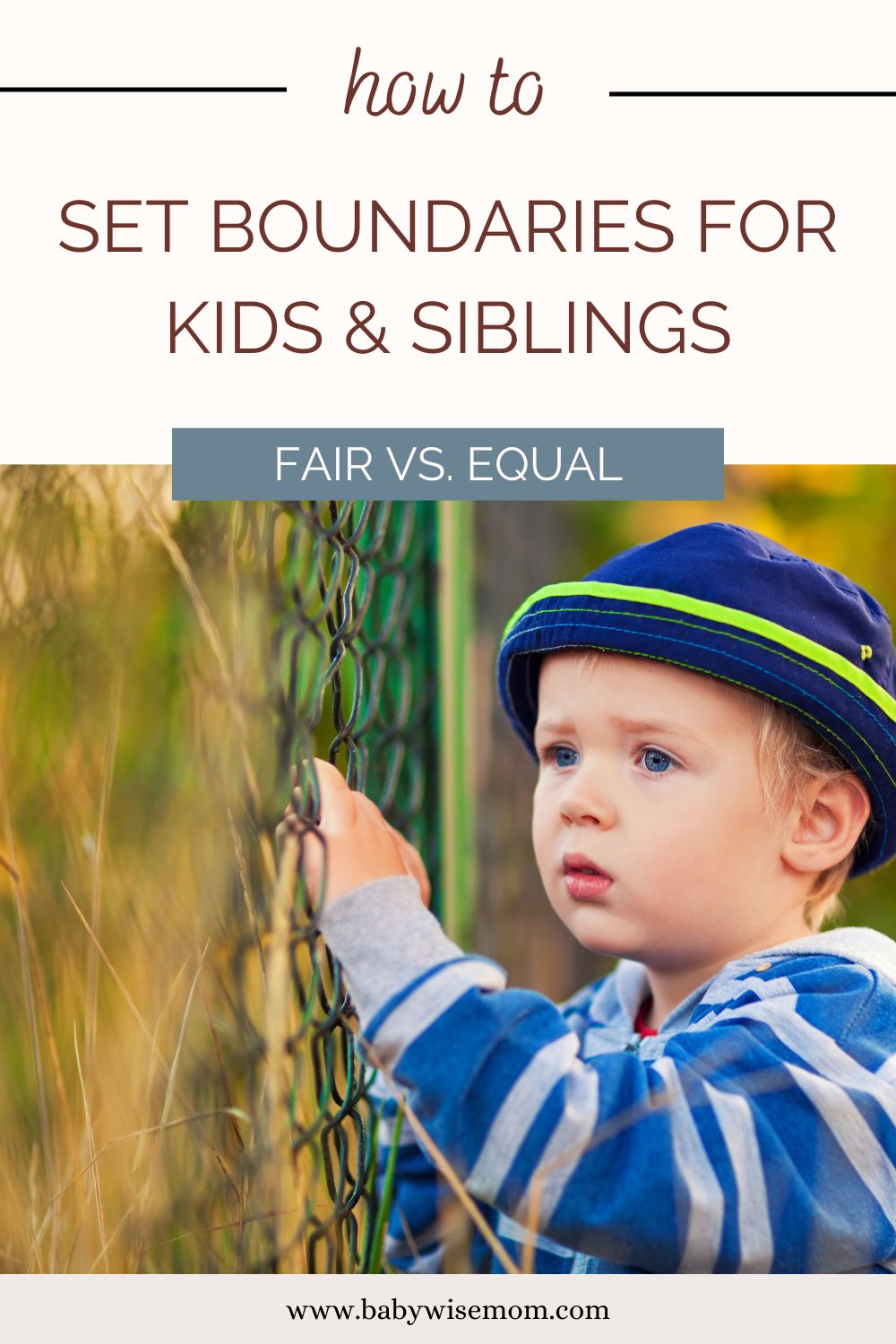Get info on how to set boundaries for kids and how to manage freedoms and boundaries in siblings. Learn how you manage to balance this when you have multiple kids in the home.

Last week, we talked about why you set boundaries with your children. As a quick review, we set boundaries to protect health and safety, and to guide morals.
But just how do you set boundaries for a mobile child?
And how do you set boundaries for a mobile child who has older siblings around? I can make sure there are not toys in the house beyond the ability of my oldest child, but how do I keep toys age appropriate for the three year old with a seven year old at home?
It isn’t just toys. A seven year old can watch shows a three year old can’t. A seven year old can participate in activities the three year old can’t. A seven year old can handle things around the house that a three year old is not yet able to do.
No matter the birth order of your child, she is going to have things she wants to do that she can’t, and as On Becoming Pretoddlerwise puts it,
“…he will let you know he is unhappy with you”.
(page 109)
This can be quite startling.
Up to this point, your child has been a little sweetheart for the most part. Then he starts protesting and tantruming.
Do not let the tantrums drive your judgment on what is appropriate and what isn’t.
Remember you are the parent, and remember you aren’t setting boundaries because you want to be mean. You are setting boundaries to protect the mind, body, and heart of your child.
Your child needs boundaries, and while it will make her upset at times, in the long run, boundaries will keep her happier.
In setting boundaries, you will be limiting your child’s freedom in environment, speech, and choices (page 108).

Setting Physical Boundaries
One thing you can do to set boundaries is to set up physical boundaries.
You can strap your child in a high chair to play while you make dinner. You can have your child play in a pack-n-play if you can’t watch her–whether you are helping older children with homework or using the restroom.
You can use less physically restrictive boundaries and use a blanket as described for blanket time.
>>>Read: Blanket Time Full Guide
As your child gets older, you can remove actual physical boundaries and give verbal instructions on boundaries.
You might have a certain room be off limits for playing in. At our house, my craft room is not to be played in without me in there. I have scissors, pins, and other sharp things I don’t want children to get into.
You start with more physical restraining. You might put toys in a tote and up higher than your child can reach. You might have a baby gate, doors closed, locks, playpens, etc. to restrict your young pretoddler from where she should be and play with.
As your child demonstrates responsibility and the ability to obey, you add freedom.
You open the door–but the room is still off limits. You might start to allow the child to be in the room with your supervision. These turn from physical boundaries to understood boundaries.
A Word About Siblings
With younger siblings, always keep in mind that life isn’t even.
Fair and even are two different things.
It is not fair to allow a young child freedoms beyond her ability to handle.
It is not fair to deny an older child freedoms just because the younger sibling isn’t ready for it.
Fair is treating children appropriately for their age.
That doesn’t mean younger children won’t complain or “wish” they could do things the bigger kids do. McKenna (3) often says, “I wish I was bigger so I could…” Something I like about that statement is that she at least realizes she needs to be bigger/older before she can do certain things.
You will also find your older children complain about things the younger child gets to do or doesn’t have to do.
This is very easily solved. Brayden complained about what McKenna didn’t have to do when she was younger. I explained the difference between fair and even, but then added, “If you want to be treated just like McKenna, I am happy to do it. McKenna takes a long three hour nap every afternoon. We can be sure you take a three hour nap every afternoon. She also doesn’t get to play video games. We can make sure you don’t play video games.” And so on.
He quickly saw he didn’t actually want things to be “even” between McKenna and himself!
>>>Read: Fair vs. Equal
Always be mindful of your child’s environment. I think the nature of living in a family and being a few years behind an older child means the younger child will often be exposed to things before the ideal age.
Do the best you can. We don’t live our lives in vacuums, so you can’t just isolate the younger child from the influence of an older sibling. You can, however, minimize the impact.
>>>Read: How to Keep Siblings in the Funnel
It would be easy to just not worry about it and let the 18 month old play with the little Legos. That 18 month old will be drawn to them both by the nature of the toy and the fact that big brother spends a lot of attention on those little items.
The 18 month old will not appreciate being told he can’t play with them, and life would be easier for mom at the moment if she just let him do it.
Always remember that what seems easiest right now often leads to more difficulty down the road. If you allow your child too many freedoms, you will at the very least have a battle of wills in the future. You also might find yourself taking your child to the doctor to remove a tiny Lego piece from his nose.
It doesn’t get easier with older children. You still have to make decisions on freedoms among all of your kids as your kids get older. You are making decisions about bedtimes, curfews, media consumption, chores, etc.
Conclusion
Setting boundaries for your child, no matter the age, is what is best for your child’s development.
Playing with toys that are developmentally appropriate for your child makes it so your child can learn from the toy, rather than be either bored or frustrated.
Setting boundaries also helps protect your child’s safety and helps protect property.
It also helps prevent your child from getting “wise in his own eyes”–also often called “too big for his britches.”
Your child doesn’t need to grow up faster than he should. Childhood is so short in comparison to life; it is not a bad thing for a 15 month old to act like and be treated like a 15 month old. All of the grown up abilities and responsibilities will come soon enough. For now, he can be a child.
Related Posts
- Consistently Parenting Your Different Children
- Meeting Needs of Each Child
- Wise In Your Own Eyes Explained
- Why You Can Give Your Baby Rules and Boundaries
- Why Toddlers Really Need Boundaries
- How Too Many Freedoms Leads to Disobedience
- How to Know What Freedoms to Give Baby

